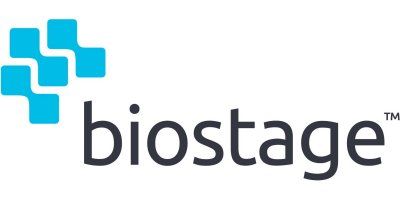

- Home
- Companies
- Harvard Apparatus Regenerative ...
- News
- Biostage Further Strengthens IP ...
Biostage Further Strengthens IP Portfolio with Additional Patent for Regeneration and Repair of the Bronchus
Biostage, Inc. (OTCQB: BSTG) ("Biostage" or the "Company"), a cell-therapy biotechnology company with successful first-in-human experience in treating esophageal cancer (conducted at the Mayo Clinic and published last August) and FDA approval to commence a clinical trial of the Biostage Esophageal Implant for severe esophageal disease including cancer, today announced that the U.S. Patent and Trademark Office (USPTO) has granted a new patent (US 11,266,763 B2) that extends its key intellectual property to cover regeneration and repair of the bronchus due to cancer, injury or birth defects.
Using a cell-seeded scaffold, which we call the Biostage Bronchial Implant, or BBI, we have performed the regeneration and repair of a bronchus (the airway that connects the trachea to the lungs) that was surgically removed from a pig. The bronchus regenerated, much as in the esophagus, first forming a tube and later developing into a bronchus with a functional lining known as the respiratory epithelium. The respiratory epithelium was seen in about two months in the pig. This respiratory epithelium is essential to the avoidance of infections such as pneumonia. This pig lived almost two years until scheduled euthanasia. This indication is protected by the newly-issued U.S. patent. Biostage`s existing patents on the bioreactor and scaffold also protect this bronchial indication. This new patent now gives Biostage the protection needed to develop a business in treating lung cancer via the regeneration and repair of the bronchus. This is in addition to the existing business opportunity in the repair and regeneration of the esophagus.
The Biostage Bronchial Implant is a temporary delivery device that administers a large dose of the patient`s own wound-healing cells to the site where the diseased or damaged bronchus was removed. The cells stimulate the body`s natural wound-healing process and the scaffold guides the growth into a tube. The scaffold is temporary and, after a few months, is removed using a bronchoscope (a minimally invasive procedure, there is no second surgery in the chest), leaving behind a regenerated bronchus derived from the patient`s own cells.
Treating bronchus cancer is a major new business opportunity for Biostage. Bronchus cancer is a subset of lung cancer. Lung cancer is the most common form of cancer and the most common cause of death from cancer worldwide. There are more than 700,000 new lung cancer diagnoses annually in the U.S. and Europe. In approximately 25% of all lung cancer cases, the cancerous tumor resides only in a bronchus and not in the lobes of the lungs and is known as central lung cancer. Approximately 33,000 central lung cancer cases diagnosed in the U.S. and Europe are Stage I and II and are considered eligible for surgical resection, often with adjuvant chemotherapy and radiation. Approximately 5,000 of those patients are treated via pneumonectomy, a surgical procedure involving the resection of the cancer tumor, the whole bronchus below the tumor and the entire lung to which it is connected. It is a complex surgery and, due to the removal of a lung, results in a 50% reduction in the patient`s respiratory capacity. The procedure has reported rates of post-surgical, or in hospital, mortality of 8% to 15%. Complication rates associated with pneumonectomy are reported as high as 50%, and include post-operative pneumonia, supraventricular arrhythmias, and anastomotic leakage, placing patients at significant mortality risk post-discharge.
We intend to develop the Biostage Bronchial Implant to treat central lung cancer patients who would currently be treated with surgical removal of the lung and bronchus. Based on discussions with surgeons in the field, we estimate that approximately 7,000 patients with these conditions in the U.S. and Europe, and approximately 22,000 worldwide, would potentially be treatable with our technology. We estimate that revenue from treating these patients could be over $1bn a year.
Once developed and approved for marketing, the Biostage Bronchial Implant has the potential to provide physicians a treatment alternative superior to the pneumonectomy (lung removal) procedure currently used to treat central lung cancer. We expect that repair with a BBI could restore the function of the bronchus without sacrificing one of the patient`s lungs. We believe this may result in fewer post-surgery complications, reduced mortality rates and improved quality of life for the patient.
In addition to developing the BBI for treating central lung cancer, we also intend to develop the BBI for the treatment of bronchial fistulas (holes) and birth defects in the bronchus.
Dr. Bill Fodor, Chief Scientific Officer of Biostage stated, "The pig study, although only in a single animal, demonstrates that the Biostage implant technology can stimulate the regeneration of an epithelialized tubular organ, similar to our esophageal implant".
David Green, founder, Chairman and interim Chief Executive Officer of Biostage stated, "The proof of concept in the pig combined with this new patent gives us the ability to develop a major new business for Biostage. We believe that Biostage`s technology can now be used to regenerate and repair two major organs in the human body – the esophagus and the bronchus. Both organs can suffer life-threatening damage from cancer, injury and birth defects."
The patent issued by the U.S. Patent and Trademark Office (USPTO) is US 11,266,763 B2 "Method and Device for In Vivo Bronchus Regeneration", Fodor et al, granted on March 8th 2022.
